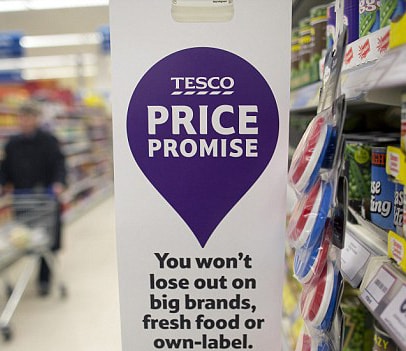 My first proper grown-up job was as a graduate trainee buyer for Sainsbury’s. At that time the firm’s once iconic set of buildings on London’s South Bank – now being redeveloped – were pretty unhappy places to work. Our biggest rivals, Tesco, could do no wrong as they seamlessly blended brilliant price-cutting promotions with a huge leap into selling non-food items such as electrical products and clothing. Sainsbury’s meanwhile was struggling to settle on a strategy to differentiate itself from its competitors.
My first proper grown-up job was as a graduate trainee buyer for Sainsbury’s. At that time the firm’s once iconic set of buildings on London’s South Bank – now being redeveloped – were pretty unhappy places to work. Our biggest rivals, Tesco, could do no wrong as they seamlessly blended brilliant price-cutting promotions with a huge leap into selling non-food items such as electrical products and clothing. Sainsbury’s meanwhile was struggling to settle on a strategy to differentiate itself from its competitors.
Previously the UK’s biggest supermarket it was soon lurching from its awful, costly ‘Value to shout about’ campaign featuring John Cleese to attempts to position the Sainsbury’s brand as a premium choice. Since then Tesco’s position as number one supermarket has been strengthened continuously with it having almost 30 per cent of the UK market a year ago. This trend may now be reversing with Tesco suffering a succession of poor sales figures while Aldi and Lidl are growing strongly at their expense.
During Tesco’s surge to dominance it communicated simply but often quite brilliantly. They used household name actors in TV and radio advertising but these were secondary to its message of delivering everyday value. In store the ‘signage’ – to use a trade term – was cut back focusing only on price and having a secondary benefit of making the stores calmer places to shop compared to rivals like Asda.
Tesco also benefited by having one of the best CEO communicators in Terry Leahy who took every opportunity to talk about the great value Tesco shoppers experienced every time they walked through the door or logged in online.
As a reaction to falling ‘footfall’ – industry speak for the numbers of shoppers visiting the stores – and sales Tesco has introduced a ‘Price Promise’. This is a guarantee that shoppers will never pay more for their food at Tesco than at any other supermarket. It should be a winning strategy but how it is delivered actually undermines Tesco’s message.
In the retail world the shopping and brand experience is measured through examining a customer’s journey from hearing about a product or brand to purchasing it. The problem is, if you have paid more for your shop at Tesco, you receive a money off coupon stating how much you will save on your next shop. It obviously follows therefore that this is how much more you have paid there and then.
You may have had a wonderful shopping experience, been served by helpful and friendly staff, bought all you wanted but this positive experience is undermined by the final interaction with the Tesco brand telling you your shopping would have cost less somewhere else. Instead of reiterating a message of great value the final touch point customers have is a negative one which is why Tesco is my Mis-Communicator of the Week.
Communicator of the Week is written by Ed Staite.
PRmoment Leaders
PRmoment Leaders is our new subscription-based learning programme and community, built by PRmoment specifically for the next generation of PR and communications leaders to learn, network, and lead.
PRmoment LeadersIf you enjoyed this article, sign up for free to our twice weekly editorial alert.
We have six email alerts in total - covering ESG, internal comms, PR jobs and events. Enter your email address below to find out more:







